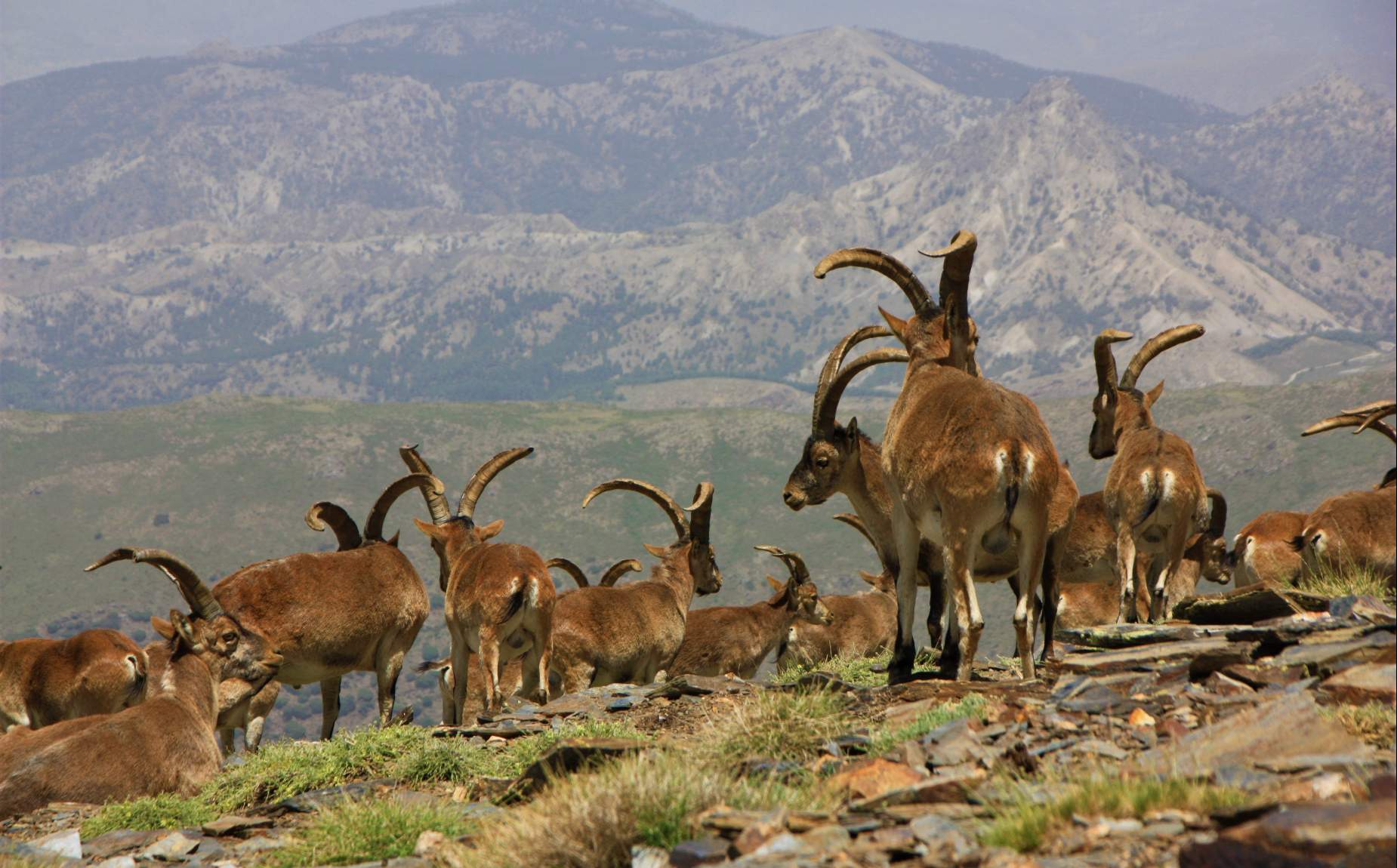Fauna and flora in the mountains
Discover the unique nature of the high mountains
Explore the exclusivity of the Sierra Nevada with specialized guides.
Immerse yourself in the unique biodiversity of the Sierra Nevada with our specialized guides. From more than 200 endemic species of insects to majestic birds such as the bearded vulture, and an exceptional flora with more than 2,300 plant species, every corner of the mountain reveals natural treasures. Join us to explore the wonderful variety of life that defines the Sierra Nevada, guided by experts who know the most emblematic and unique places in the region.
Exclusive high mountain flora
One of the world-renowned values of the Sierra Nevada is its diverse and unique flora. It is estimated that there are more than 2,300 plant species and subspecies that live and flourish in the different areas of the Sierra. The number of species exclusive to the highlands of the Sierra Nevada, some 80, is greater than the sum of the endemic species of all of Europe. If you are a botany lover and enjoy finding and photographing these unique species, you should head to the high mountains once the snow is gone and the high meadows and cliffs are dotted with flowers. Ecotourism guides will take you to the places where the most emblematic species of the sierra live, sometimes hidden in crevices or among moving rocks or streams, and you will find many of these species in the headwaters of the San Juan and Dílar rivers, easily accessible from Hoya de la Mora. Other exceptional places need more effort, such as the Cañada de 7 Lagunas accessible from the Alpujarra, the Lavaderos de la Reina, from Güéjar Sierra, or the more remote lagoons and peaks that will require a good hike. A complementary activity to the field route is a visit to the Hoya de Pedraza botanical garden, at kilometer 27 of the road to Sierra Nevada.
Wildlife observation
The specialized guides of Sierra Nevada will give you the opportunity to discover the uniqueness of the flora, fauna and geology of the Sierra Nevada. The world of insects offers us more than 200 endemic species, 270 if we also consider the exclusive subspecies. Half of the specially protected insects of Andalusia are found in Sierra Nevada. Ecotourists who love butterflies should visit the Botanical Path of La Cortijuela between May and June, where dozens of lepidoptera feed on the great variety of flowers in this natural garden. But the queen species, the most exclusive, must be sought in July in the high mountains. The meadows and streams are overflown by multicolored clouds of butterflies, and bird lovers will also capture in their binoculars and cameras the Alpine Accentor, the Wheatear, the Red-billed Chough, the Golden Eagle, the Griffon Vultures and, perhaps, the Bearded Vulture, which is more and more frequently seen in our summer skies. On the border between our two provinces lives, part of the year, the greenfinch and in medium and low mountain crags, we find black wheatear, solitary rock thrush, screech sparrow and peregrine falcon. In more arid basal areas, the wheatear visits us during the summer, in addition to the colorful bee-eater, and although, difficult to find in our mountainous massif, sometimes the trumpeter bullfinch, an African species increasingly abundant and sedentary in our provinces, approaches us.





